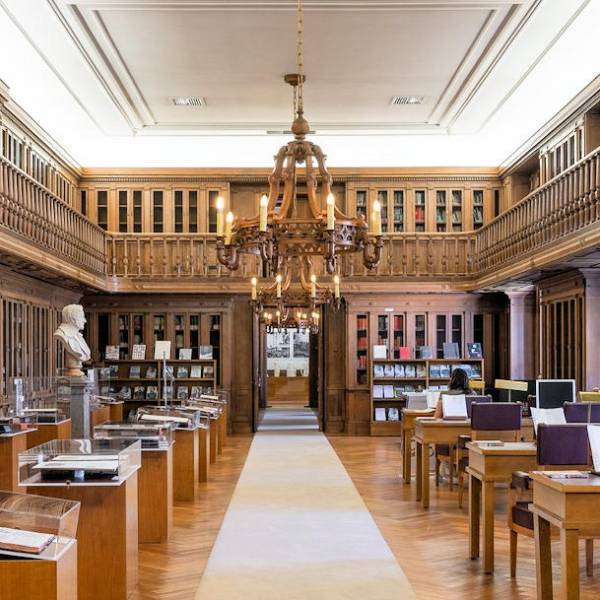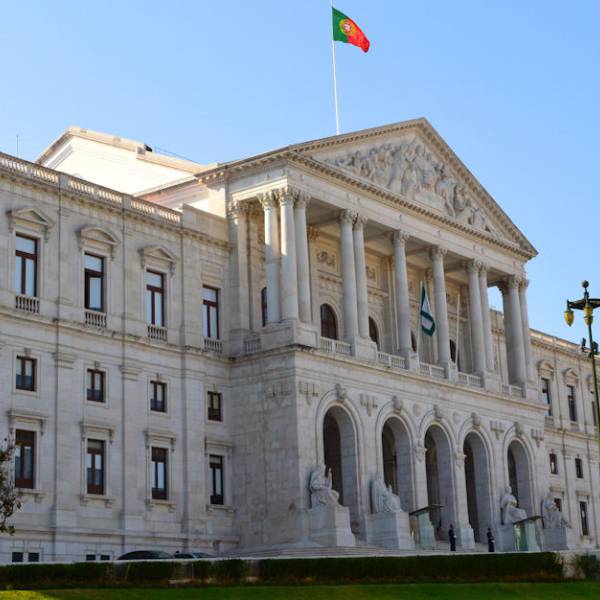Throughout the 19th and 20th centuries, São Bento Palace underwent significant renovation works, both interior and exterior, which transformed it into a distinct structure from its original monastery form. Notable transformations include the remodeling by Ventura Terra in the late 19th century and the addition of the monumental staircase in 1936, designed by António Lino and completed by Cristino da Silva. The palace features a central body with arcades on the ground floor and a gallery with a colonnade above, topped by a triangular pediment adorned with stucco decorations. The interior is equally grand, with numerous wings, highlighting the Chamber of Deputies' Session Hall, the Hall of Lost Steps, the Noble Hall, and other rooms showcasing artwork from different periods of Portuguese history. São Bento Palace also houses a Historical Museum and has been classified as a National Monument since 2002.
In 1999, a new building was inaugurated, serving as additional support for the Assembly of the Republic. Located in São Bento Square, the new building, designed by architect Fernando Távora in 1996, is connected to the palace through direct internal access but intentionally constructed as an autonomous structure to preserve and respect the palace's architectural integrity.
São Bento Palace possesses a significant historical, photographic, and audiovisual archive. The Historical Archive holds documentation related to parliamentary activities from 1821 to the present day. The Photographic Archive contains images of parliamentary activities, as well as pictures of São Bento Palace and the post-April 25th period. The Audiovisual Archive consists of audio and audiovisual records of plenary sessions, committee meetings, and selected events.
The library, known as Passos Manuel Library since October 2017, is a specialized library that provides bibliographic support for parliamentary work. Its mission is to acquire, manage, and disseminate national and international scientific and technical information, as well as information produced by the media.
Established in 1836 with an initial collection of 7,300 volumes, the library grew to 23,000 volumes by the end of the 19th century, including important collections of Portuguese parliamentary documents. Since 1974, the library's services have been restructured to cover all subjects of parliamentary interest, such as Law, Politics, Economics, Science and Technology, Social Life, Public Administration, and Statistics. It comprises various documentary collections, including an Ancient Book Collection (1491-1800) with approximately 5,000 volumes, a Monograph Collection with around 50,000 volumes, a collection of over 3,300 journal titles, a national legislation collection dating back to the 16th century, and official publications of the Assembly of the Republic.
Lisbon.vip Recommends
Ah, São Bento Palace, it's like a symphony of history and architecture harmoniously echoing through the heart of Lisbon! This splendid gem beckons you with open arms, inviting you to embark on a thrilling adventure through the mesmerizing world of neoclassical design. As you wander its regal corridors, you can practically feel the whispers of Portugal's parliamentary history dancing around you, telling tales of grand debates and pivotal decisions that have shaped our nation's destiny. And oh, the art and culture that adorn its walls – it's like stepping into a treasure trove of artistic brilliance, a veritable feast for the senses! Whether you're standing in awe of its majestic façade or meandering through its opulent halls, São Bento Palace takes you on a whirlwind journey through the annals of time, offering a front-row seat to the incredible transformation of Portugal's political and social landscape. It's a place where "saudade" for our past meets the sheer excitement of exploration!
Map View





